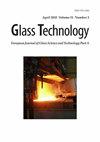油田钻井用Raphia Sese油基泥浆(酯油)流变性能评价
IF 0.3
4区 材料科学
Q4 MATERIALS SCIENCE, CERAMICS
Glass Technology-European Journal of Glass Science and Technology Part a
Pub Date : 2022-11-29
DOI:10.47672/ejt.1290
引用次数: 0
摘要
目的:油基钻井液带来的环境挑战,以及与油基钻井液使用相关的立法,使得开发既能满足行业技术要求又能满足环境要求的合成有机液体成为必要。为此,以Raphia Sese油(酯油)为原料配制了一种环保型植物油基泥浆,并对其流变性能和经济性能进行了分析。方法:在80 of至200 of的未老化条件下,评估泥浆的流变特性,如塑性粘度、屈服点、流动指数、表观粘度、稠度指数、表盘读数、密度和pH。结果:油葵油基泥浆与常规油田添加剂具有良好的配伍性。虽然由于Raphia sese油的pH值较低(5.53),其泥浆的pH值自然较低(8.3),但通过改进提取工艺和添加pH添加剂,可以提高其pH值。与柴油基钻井液相比,Raphia sese基钻井液具有更高的密度值和良好的流变性能。虽然将Raphia sese油用于泥浆配方的初始成本很高,但与柴油相比,其处理成本抵消了这一成本(节省了约34%的柴油使用成本)。建议:根据研究结果,建议改进罗非鱼油的回收工艺及热氧化稳定性。再次,必须进行更高的热调节测试,以确定Raphia sese油在更高温度下的稳定性。此外,刚果国家可以考虑驯化Raphia sese palm,以增加其油的产量,国家可以进行改良种植,以促进油的本地含量和参与政策。本文章由计算机程序翻译,如有差异,请以英文原文为准。
Evaluation of the Rheological Properties of Raphia Sese Oil Based Mud (Ester Oil) for Oil Field Drilling Applications
Purpose: The environmental challenges posed by oil-based drilling fluids along with legislation associated with their use have necessitated the development of synthetic organic liquids that are able to both meet the technical and environmental requirements of the industry. In this regard, an environmentally friendly vegetable oil-based mud from Raphia Sese oil (ester oil) was formulated and its rheological properties and economics abilities analyzed.
Methodology: The rheological properties of the mud such as plastic viscosity, yield point, flow index, apparent viscosity, consistency index, dial readings, density, and pH were evaluated at unaged conditions from 80 oF to 200 oF.
Findings: The results showed that Raphia sese oil base mud was compatible with the conventional oilfield additives. Though its mud naturally recorded a low pH (8.3) due to the low pH of the Raphia sese oil (5.53), with improved extraction process and with the addition of pH additives, this could be enhanced. When compared with diesel-based mud, the Raphia sese based oil mud recorded higher density values and promising rheological properties. Though the initial cost of conditioning Raphia sese oil for mud formulation purposes was high, it was offset by its disposal cost as compared to that of diesel oil (saves about 34% the cost of using diesel).
Recommendation: From the findings, it is recommended that the recovery process of the Raphia sese oil as well as its thermal oxidation stability should be improved. Again, higher thermal conditioning testing must be done to ascertain the stability of the Raphia sese oil at higher temperatures. Also, the Congolese nation could consider the domestication of the Raphia sese palm to increase the production of its oil and the nation could go into the improved cultivation to promote local content and participation policy of the oil.
求助全文
通过发布文献求助,成功后即可免费获取论文全文。
去求助
来源期刊
CiteScore
0.30
自引率
0.00%
发文量
0
审稿时长
>12 weeks
期刊介绍:
The Journal of the Society of Glass Technology was published between 1917 and 1959. There were four or six issues per year depending on economic circumstances of the Society and the country. Each issue contains Proceedings, Transactions, Abstracts, News and Reviews, and Advertisements, all thesesections were numbered separately. The bound volumes collected these pages into separate sections, dropping the adverts. There is a list of Council members and Officers of the Society and earlier volumes also had lists of personal and company members.
JSGT was divided into Part A Glass Technology and Part B Physics and Chemistry of Glasses in 1960.

 求助内容:
求助内容: 应助结果提醒方式:
应助结果提醒方式:


